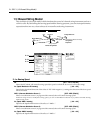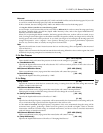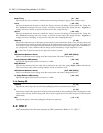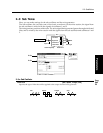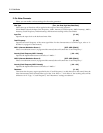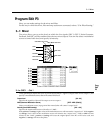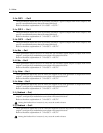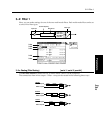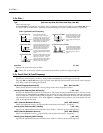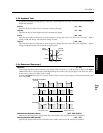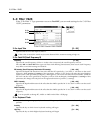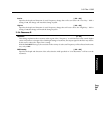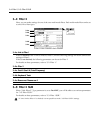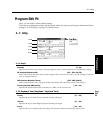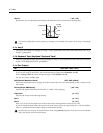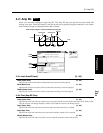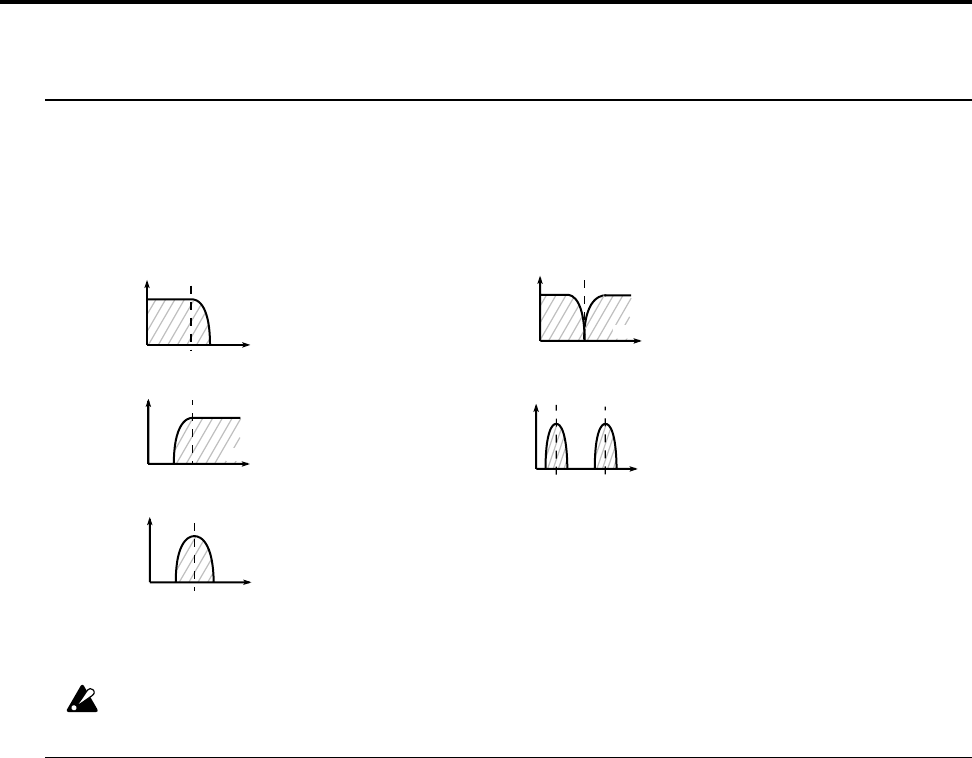
3–2b: Filter 1
Type [Low Pass, High Pass, Band Pass, Band Reject, Dual BPF]
Selects the filter type.
When Dual BPF is selected, the “3-3: Filter 1 SUB” parameters can also be set. When you select Dual BPF, the “3-
2c: Cutoff” and “3-2e: Resonance” parameter names will change to Cutoff A and Resonance A respectively.
Input Trim [0…99]
Specifies the level of the input to filter 1.
If this value is raised, the sound may become distorted if the resonance setting is high, etc.
3–2c: Cutoff/Cutoff A (Cutoff Frequency)
Frequency [0…99]
Specifies the cutoff frequency of filter 1. As this value is increased, the cutoff frequency will rise.
Since the BPF and Dual BPF filter types use filters with differing characteristics, their actual cutoff frequency
may differ even if their settings are identical.
EG (Cutoff Frequency Modulation EG) [EG1…EG4, Amp EG]
Selects the EG that will create time-varying change in the cutoff frequency of filter 1.
Intensity (Cutoff Frequency Mod. EG Intensity) [–99…+99]
Specifies the depth and direction of the control that “EG (Cutoff Frequency Modulation EG)” will have on the
cutoff frequency. With positive (+) settings of this parameter, the tone will become brighter when the various EG
levels rise into the + area (the setting of the “Frequency” will be reached when the EG levels are at 0), and darker
when the EG levels fall into the – area. With negative (–) settings of this parameter, the tonal change will take
place in the opposite direction.
AMS.1 (Alternate Modulation Source 1) [OFF…MIDI (CC#83)]
Selects a modulation source 1 (
☞
page 64 of this manual) that will control “Frequency.”
Intensity (Cutoff Frequency AMS.1 Intensity) [–99…+99]
Specifies the depth and direction of the effect that “AMS.1” will have on the cutoff frequency.
AMS.2 (Alternate Modulation Source 2) [OFF…MIDI (CC#83)]
Selects a modulation source 2 (
☞
page 64 of this manual) that will control “Frequency.”
Intensity (Cutoff Frequency AMS.2 Intensity) [–99…+99]
Specifies the depth and direction of the effect that “AMS.2” will have on the cutoff frequency.
Filter Types and Cutoff Frequency
Low Pass Filter (LPF)
Dual Band Pass Filter (Dual BPF)
Cutoff
Frequency A
Cutoff
Frequency B
A low pass filter is the most
commonly-used type of filter, and
passes the range of frequencies that
lie below the cutoff frequency, and
cuts the high range. Cutting the higher
partials will cause a bright sound to
become darker (more mellow).
A high pass filter passes the range of
frequencies that lie above the cutoff
frequency, and cuts the low range.
This type of filter is used when you
wish to make the sound thinner.
However, raising the cutoff frequency
excessively will drastically reduce the
volume.
A band pass filter passes the range of
frequencies in the vicinity of the cutoff
frequency, and cuts the ranges
above and below. This type of filter is
used when you wish to emphasize a
particular portion of the sound.
The dual band pass filter places
two band pass filters in parallel.
It allows you to simulate sounds
such as human voice and the
body resonances of a violin or
guitar.
Band Pass Filter (BPF)
High Pass Filter (HPF )
Cutoff
Frequency
A band reject filter cuts only the
range in the vicinity of the cutoff
frequency, and passes the rest
of the sound. This type of filter
gives a unique character to the
sound.
Band Reject Filter (BRF)
Cutoff Frequency
Cutoff Frequency
Cutoff Frequency
frequency
frequency
frequency
frequency
frequency
3-2: Filter 1



